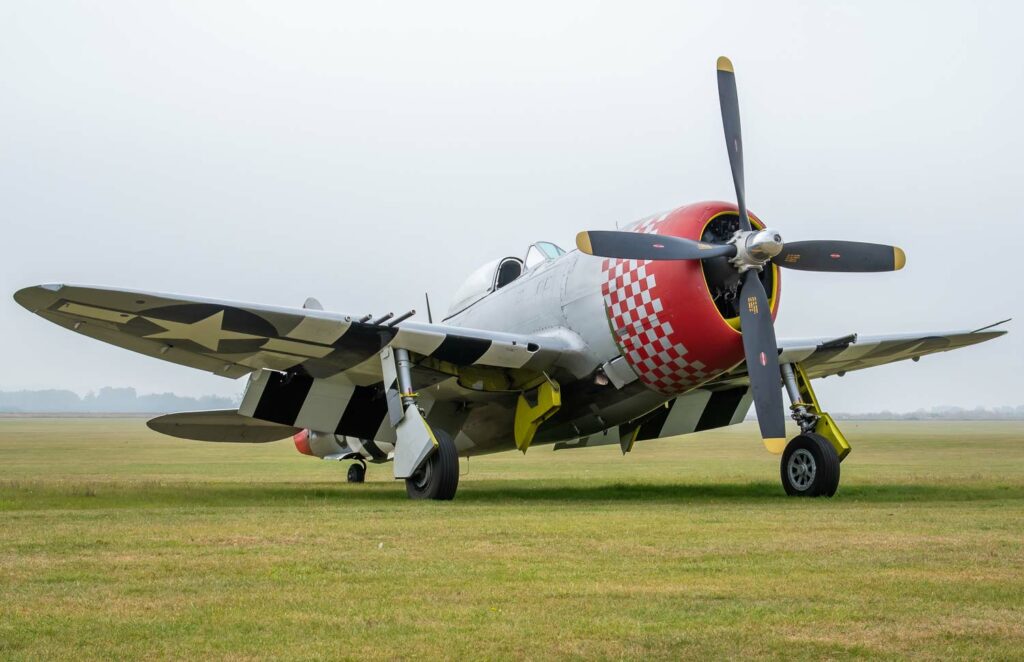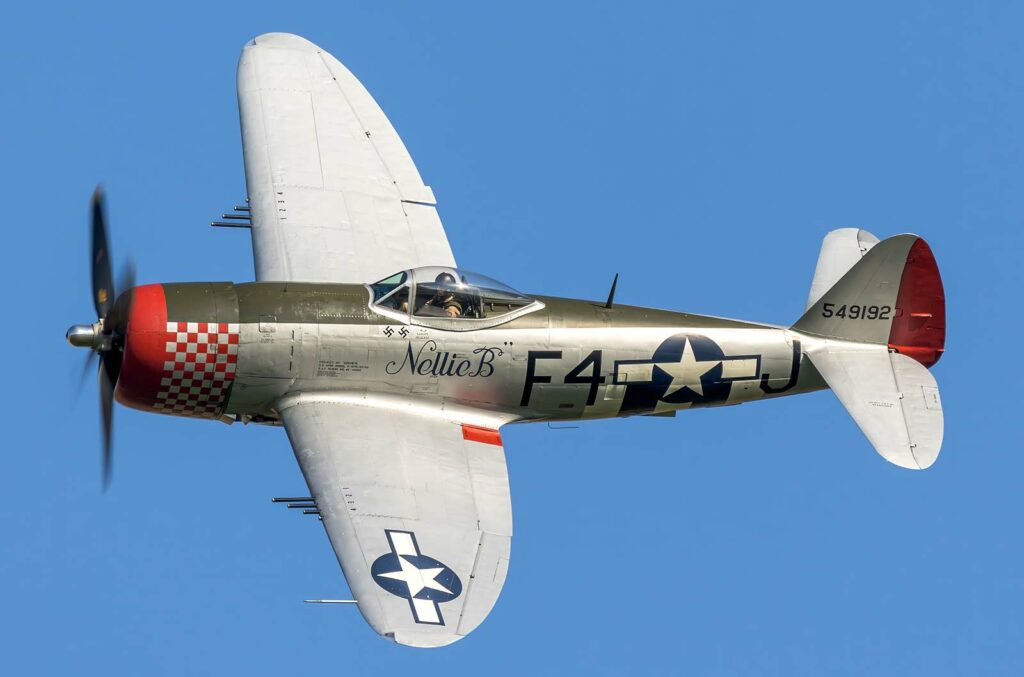The Republic P-47 Thunderbolt, a robust WWII American fighter-bomber, known for its heavy armor, firepower, and radial engine.
The Republic P-47 Thunderbolt was one of the largest and most powerful fighter aircraft in service during World War II. Known as the “Jug,” it was a mainstay in the U.S. Army Air Forces and played a significant role in achieving air superiority over Europe. This article aims to explore the development, design, operational capabilities, and combat history of the P-47 Thunderbolt.

History of the Development of the Republic P-47 Thunderbolt
In the late 1930s and early 1940s, as global conflict loomed, the United States sought to strengthen its air combat capabilities. The development of the P-47 Thunderbolt was initiated by Republic Aviation under the leadership of Alexander de Seversky and chief designer Alexander Kartveli. The goal was to create a high-performance fighter aircraft that could compete with emerging European designs.
The P-47’s development was driven by the need for a robust, heavily armed, and high-powered fighter. The prototype, known as the XP-47B, first flew on May 6, 1941. The aircraft was designed to fulfill multiple roles, including air superiority, ground-attack, and escort missions.
Its development was a crucial part of the United States’ efforts to produce an advanced fighter capable of dominating in various combat scenarios.
Design of the Republic P-47 Thunderbolt
The P-47 Thunderbolt’s design was characterized by its large size and heavy construction. It was powered by a Pratt & Whitney R-2800 Double Wasp radial engine, one of the most powerful engines available at the time, capable of producing over 2,000 horsepower.
The aircraft had a length of 11 meters and a wingspan of 12.4 meters. Its design featured a robust airframe, capable of withstanding significant battle damage. The P-47 was also known for its heavy armament, typically carrying eight .50 caliber machine guns, and could carry a variety of bombs and rockets for ground-attack missions.
One drawback of the design was its relatively large size and weight, which impacted maneuverability compared to lighter fighters. However, its ruggedness, firepower, and high-altitude performance were unparalleled.
Performance of the Republic P-47 Thunderbolt
In terms of performance, the P-47 Thunderbolt excelled in several areas. It could reach a top speed of approximately 700 km/h (435 mph) and had a service ceiling of 12,800 meters (42,000 feet). Its range was significantly enhanced with drop tanks, allowing it to escort bombers deep into enemy territory.
Compared to contemporaries like the P-51 Mustang or the German Focke-Wulf Fw 190, the P-47 was less agile but more durable, with the ability to absorb considerable damage and still return to base. Its performance made it a formidable opponent in both air-to-air and ground-attack roles.

Military Use and Combat of the Republic P-47 Thunderbolt
The P-47 Thunderbolt saw extensive combat throughout World War II. It was initially used as a high-altitude escort fighter for bombing missions over Europe and later excelled in the ground-attack role following the D-Day invasion. The P-47’s firepower and durability made it particularly effective in strafing and bombing missions against ground targets.
The Thunderbolt competed with various Axis aircraft and proved to be a versatile and formidable platform. Its ability to perform in multiple roles contributed significantly to the Allied war effort.
The P-47 was used by several Allied nations during the war and continued to serve in various air forces post-WWII. It was eventually replaced by more advanced jet fighters in the late 1940s and 1950s.
The Republic P-47 Thunderbolt remains a symbol of American industrial and military aviation prowess during World War II. Its development, robust design, versatile performance, and significant combat record underline its importance as one of the most effective and enduring fighter-bombers of the era. The Thunderbolt’s legacy is reflected in its substantial contribution to the Allied victory and its enduring status as a legendary aircraft in military aviation history.
Back to the Warbirds section.